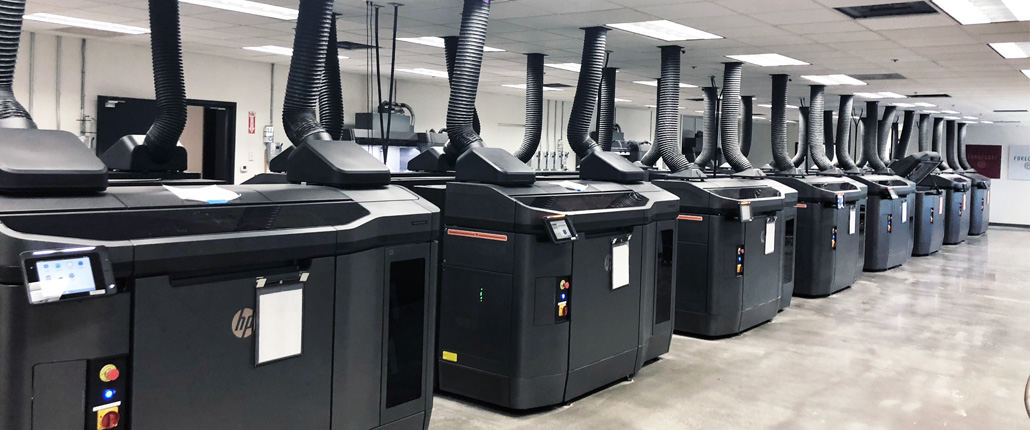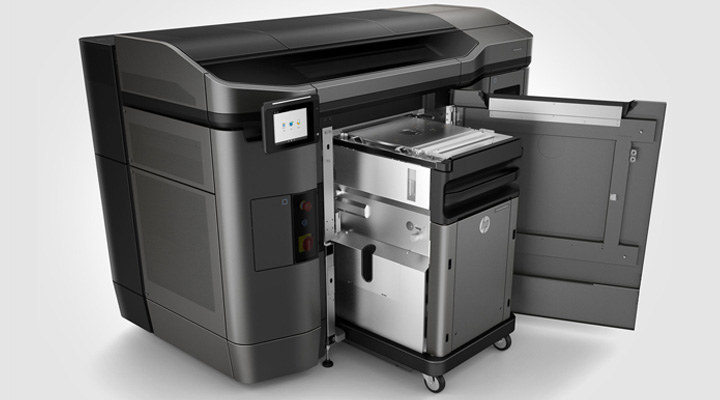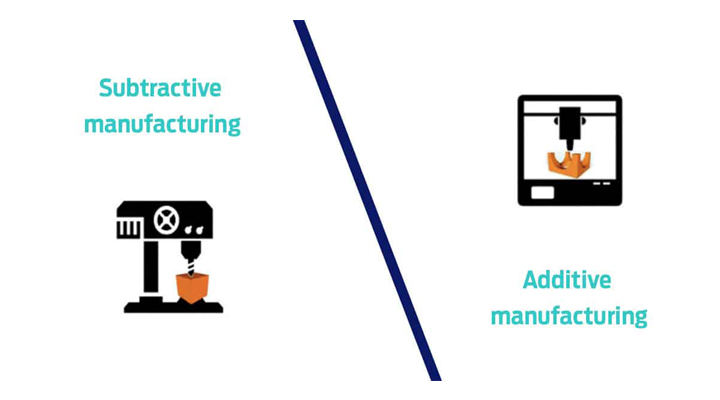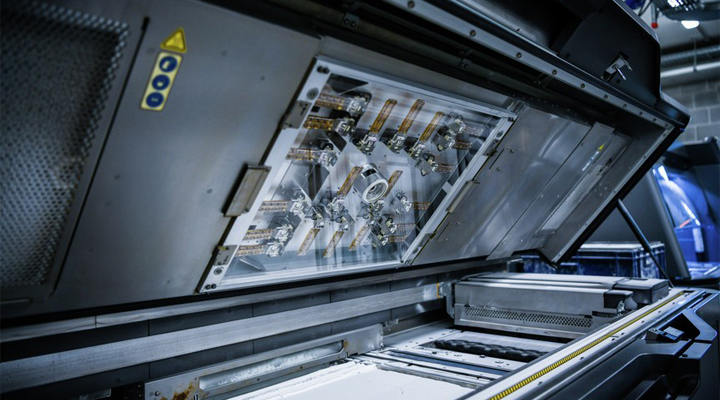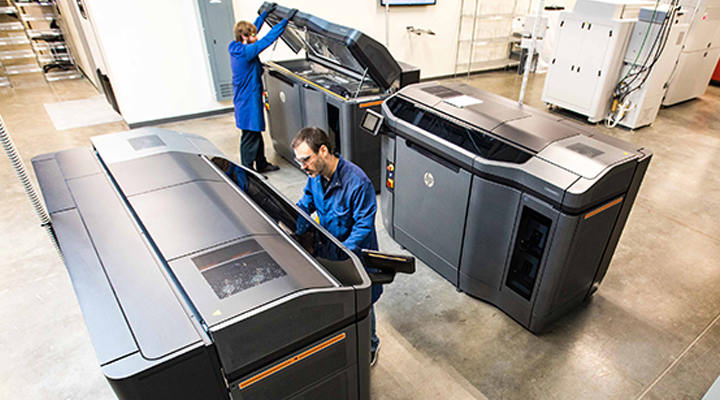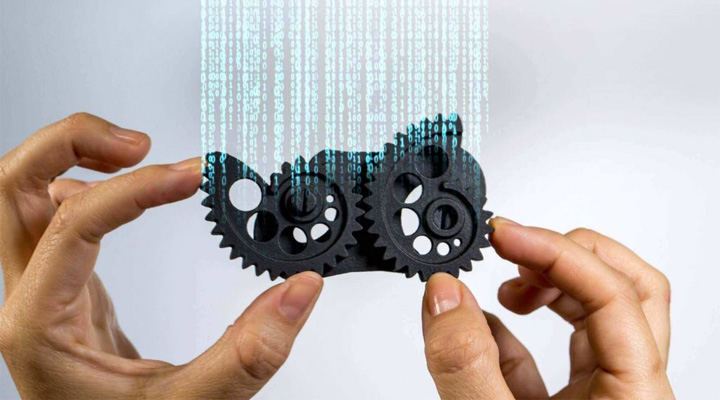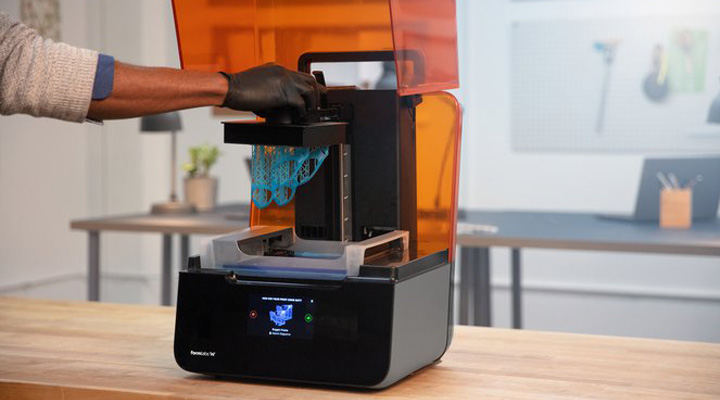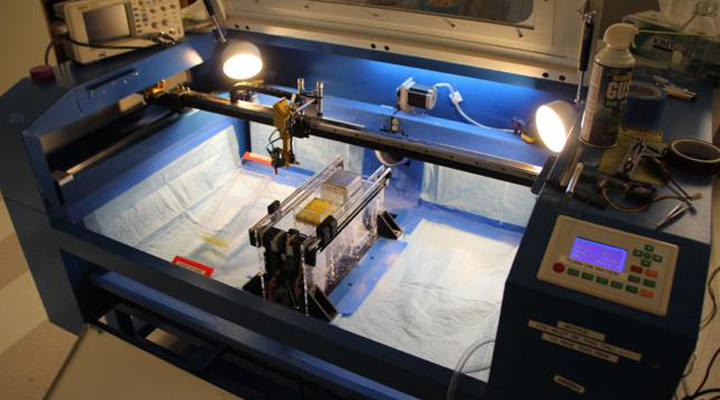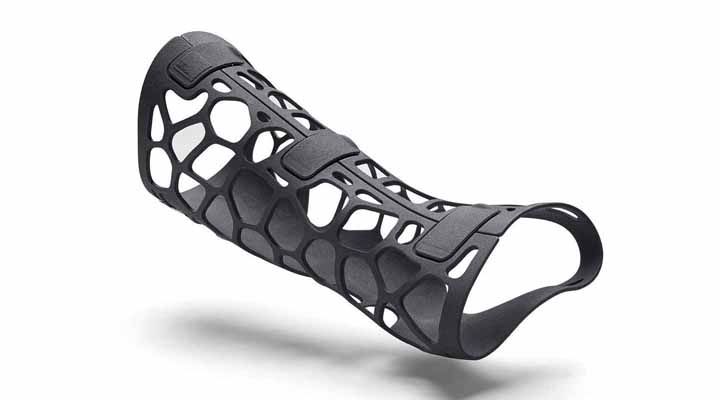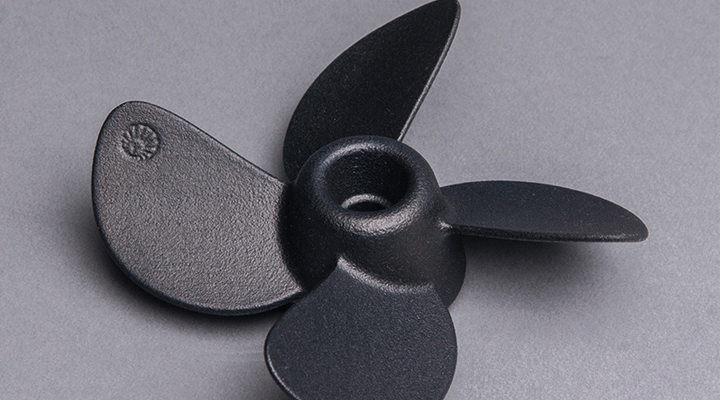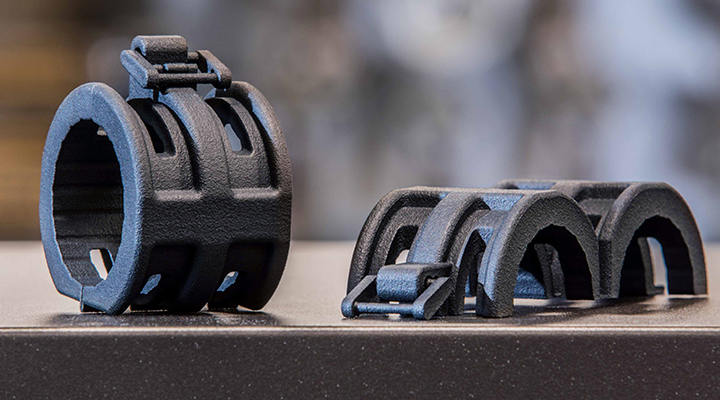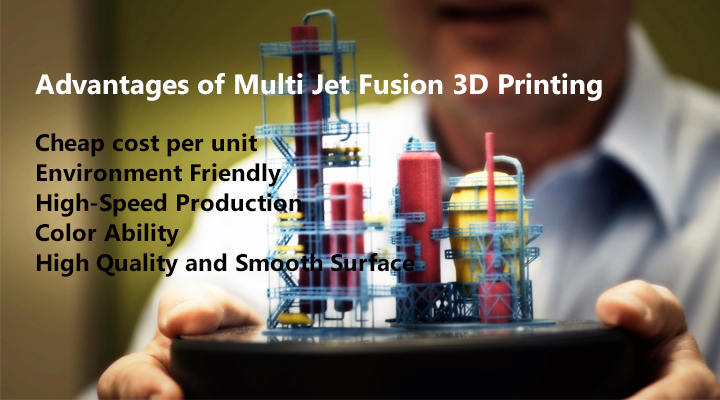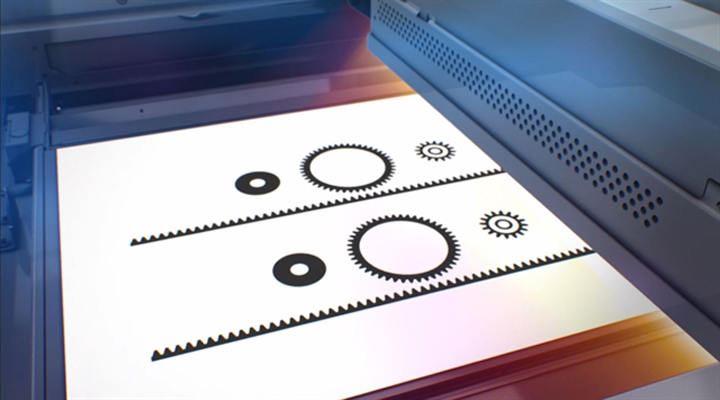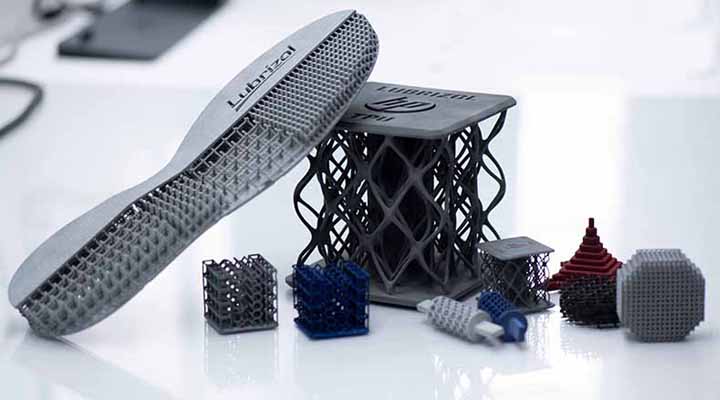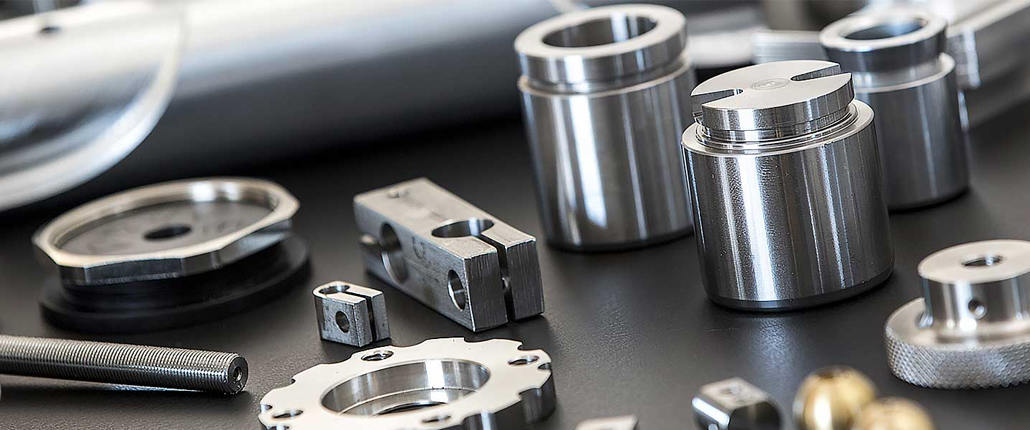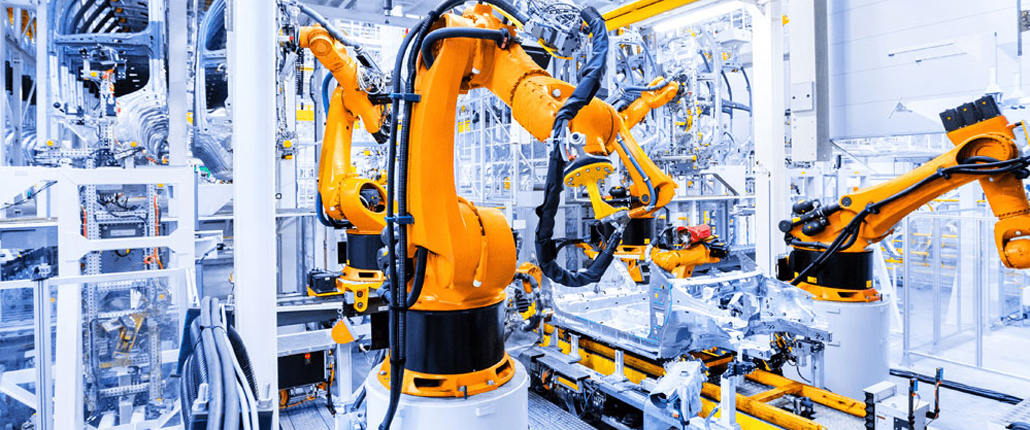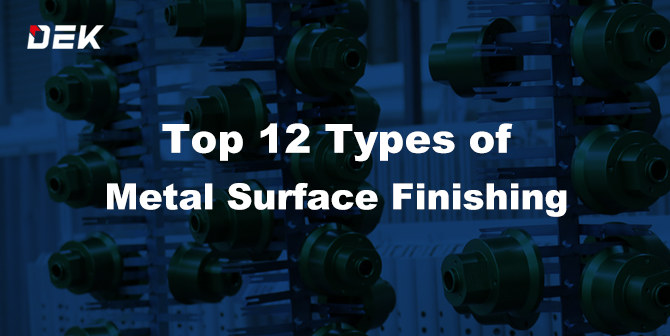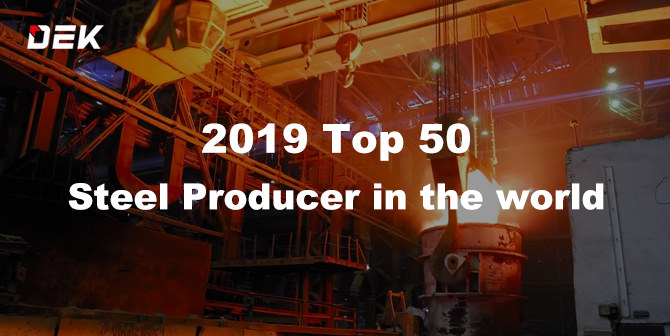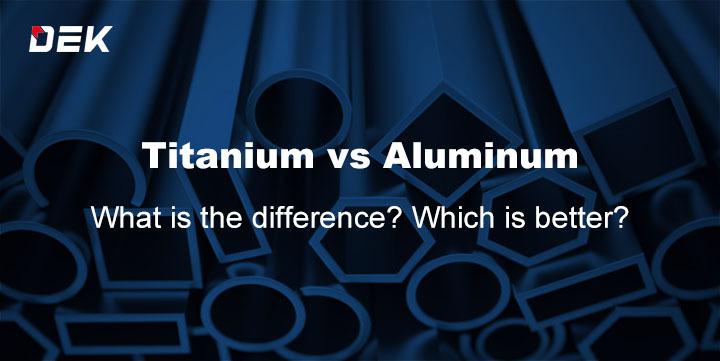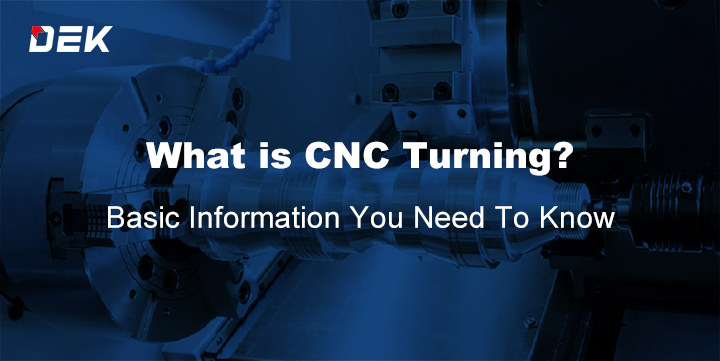As the world is moving into its most technological era, innovation has emerged in every sector, so is the case with printing technologies. Now, with the help of 3D printing, we can achieve an intricate design with minimum cost. One of the techniques we use in 3D printing is Multi Jet fusion. Multi Jet Fusion is the new 3D printing technology that offers more possibilities to create complex and low-cost pieces and end parts. This technology gets its name from its multi inkjets heads that perform the printing process. The multi Jet process is used by industries for both prototyping and manufacturing.
Though this method is high in demand, if you want to know why it’s a groundbreaking innovation and how can it help you, this article will give a brief overview of how Multi Jet Fusion works, what material Multi Jet Fusion use, and its advantages and applications.
What is Multi Jet Fusion 3D Printing?
From prototypes to multiple end-use parts, Multi Jet Fusion is efficient in producing highly detailed and large quantities at once. This process helps different industries create products and prototypes that let their business lifecycle runs smoothly. It also helps in manufacturing household items that make everyday life easier. It produces smooth surface material straight out printer which needs minimal post-production finishing.
Multi Jet Fusion is exemplary for non-cosmetic housing, connectors, wiring clips, covers, and hidden parts like ductwork. This practice is used for producing parts with fine details with small intricacies with complex designs like living hinges and small holes. This helps companies produce prototypes and small series of end-products in a short lead time. The Multi Jet Fusion process is a multifaceted process leveraged by a wide range of industries. Healthcare, consumer electronics, and automotive are MJF regularly to get the process done. Some common applications of Multi Jet Fusion are prosthetics, dental molds, automotive component molds, and aerospace camera enclosure.
Though it’s a relatively new technology it has generated a huge impact and brought a revolution in the industries. If you are looking for mass customization, you should start considering Multi Jet Fusion for its smart customization and detailed properties for creating complex shapes in a short time.
Additive manufacturing VS Subtractive manufacturing
Additive manufacturing is used for adding material layer by layer, while subtractive manufacturing removes material to create parts. Though, these processes are fundamentally different but often used side by side for their overlapping range of application.
Additive Manufacturing
This process is used in adding a layer of material to create a part. It is employed by a broad range of engineering and manufacturing applications including casting pattern making, prototyping, and tool making. It helps companies to create custom manufacturing of final parts. 3D printers in additive manufacturing offer materials that can be used for functional prototyping of different plastic parts.
Subtractive manufacturing
Subtractive manufacturing helps to remove material from solid blocks, plastic bags, and metals that are shaped by material removal. These procedures are performed manually or with the help of computer numerical control (CNC). A variety of surfaces can be machined through subtractive like stepped, smooth, and mottled. Generally, it’s more expensive than additive manufacturing.
How does it work?
Machines
Multi Jet Fusion uses inkjets to selectively fuse and then detailing agent on nylon bed powder its jetted around the material to improve the resolution. After that, lamps move over surface powder bed, the jetted material fuse heat and distribute it evenly. When this process is finished, the powder bed part is moved to a station with encapsulation to remove the excess powder with the help of an integrated vacuum.
When the excess powder is removed, parts are bead blasted to lose any remaining powder before sending the material to the finishing department. The Multi Jet Fusion 3D printing machines have exchangeable build parts that can be moved back to 3D printers and different post-processing parts to raid cool down and powder removal. This system allows the printer and post-processing units to run continuously to build units speedily.
Working Principal
Multi Jet Fusion is a new powder-based edge cutting 3D printing technology. Multi Jet Fusion generates high-resolution precise 3D objects with high surface quality and low porosity.
The Multi Jet Fusion employs a 3D printing process that is an additive method in nature. This process uses droplets of binding and detailing agent over the layer of the polymer powder in a preheated bed and then going through a different process like infra light treatment and cooling effect for a crisp edge. When this process is finished the building part (the entire power bed along with encapsulated parts) is removed and placed for cooling in the post-processing unit.
The powder support structure grows giving it great freedom to design and making the overall process fast. Multi Jet Fusion can run almost continuously if the build units are removed for the post-processing as each unit is completed. The powder can be recycled by loading back to the build from post-processing. Multi Jet Fusion is compatible with HR PA 12 nylon, HR PA 12 GB (nylon enforced with glass beads), and HR PA 11.
How to perform Multi Jet Fusion 3D Printing
Multi Jet Fusion belongs to the powder bed fusing family and it dies not to use laser-like SLS. Though, it uses material PA 12 like Selective Laser Sintering. Multi Jet Fusion process resembles binder jetting in a way that selective material fuses.
Step 1: The first step begins with the spread of uniformly pre-heated polymer powder particles on the powder bed.
Step 2: Then, the second step involves two different types of agents, one fusing and the other detailing. The printer ejects fusing particles selectively onto the powder where the particles need to be melted with the help of a fusing agent. After that, the detailing agent prevents sintering and deposits around the object to create fine details and smooth surfaces.
Step 3: In this step, the energy source like infrared light passes over the build material to provoke the material to fuse to form the complete layer. Thus, making the production throughput.
Step 4: Once the previous step is completed, the powder is again distributed over the finished material and the process is repeated until the complete functional part is formed.
Step 5: When the final part is completed, it is still covered in loose powder, which must be removed. You can also bead blast and dye black the finished part to achieve the aesthetically pleasing object.
3 Common methods used for 3D printing
Multi Jet Fusion (MJF)
Multi Jet Fusion (MJF) is the fastest plastic prototyping method used in the industries. It is perfect for both beginners and experienced professionals. Industrialist uses the Multi Jet Fusion technology for the accelerated build time and lower production cost. The layer-by-layer process of Multi Jet Fusion technology makes it faster as compared to point by point 3D printing method. Regardless of the complexity of the material each layer takes the same time to fuse.
With this process, it is possible to nest parts vertically as well as horizontally. Multi-jet fusion 3D printing requires no tooling investment and minimum volume requirement which makes it the best option among other methods.
Stereolithography (SLA)
Stereolithography (SLA) is the world’s first 3D printing method. It belongs to the family of additive manufacturing. SLA uses the 3D printing method called VAT Polymerization in which photopolymer gum is specifically restored by the light source. SLA can produce parts with a high level of detail, tight tolerances, and smooth surface finishes.
SLA brings out quality surface finishes that not only look nice but can also aid in part’s function. Material manufacturers use SLA for parts that require small and intricate characteristics like injection molding such as automotive styling components, master patterns, and snap-fit assemblies. It is widely used in the medical industry and commonly used in anatomical models and microfluidics.
Selective Laser Sintering (SLS)
One of the technologies used in 3D printing today is Selective Laser Sintering (SLS). It is also an additive manufacturing technology. In SLS, small particles of plastic, glass, or ceramic are fused by heat with the help of a high-power laser to turn them into solid, three-dimensional material.
A computer-aided (CAD) file is used in this method likewise all 3D printing processes. The CAD file is converted to .STL format to feed the instruction to the machine. New advances in machines, software, and materials have made SLS accessible to a broad range of industries. That has enabled more and more industries to use this method which is previously limited to some high-tech industries.
Materials of Multi Jet Fusion 3D printing
Nylon PA 11 and benefits
Nylon PA 11 is a bio-derived powder that has unusually high toughness. This material offers high ductility and has a strong impact on all applications.
Benefits
- Due to its crystalline morphology, it offers more mechanical properties as compared to PA12
- Its uses less renewable resources during production
- It has good elasticity and high abrasion resistance
- It is used in production more than prototyping
- It is a durable and eco-friendly additive manufacturing
Nylon PA 12 and benefits
3D printed parts with this material when come out of printing machine have grey color which is non-dyed. This property makes it more economical.
Benefits
- Nylon PA 12 bears high impact resistance.
- It is highly processed able and heat resistant.
- Nylon PA 12 dampens noise and vibration.
- Nylon PA 12 is more scratchproof and light U.V and weather stabilized.
Polypropylene and benefits
It is the second most-produced plastic in the world. Polypropylene is considered the steel of plastic because of its versatility. It is flexible and can be modified depending upon the application.
Benefits
- It is a relatively inexpensive material as compared to other materials.
- It is very resistant to moisture and has a low coefficient of friction.
- It is more easily repaired when damaged.
- Polypropylene has good chemical resistance for a wide range of acid and base.
Technical aspects of MJF
If you are not experienced in this field, don’t worry. We will help you achieve the best Multi Jet Fusion 3D printing results. Below mentioned are some technical aspects you should consider before running MJF 3d printer.
- Size Limitation: When you design something using 3D printing always keep in mind the physical limitation of that machine. MJF 3D printing operates on a part having a maximum volume of 250x250x250 mm. If you need a part larger than that you have to print different parts and assemble them later.
- Minimum thickness: In the case of Multi Jet Fusion technology the minimum wall thickness is 0.6 mm. if your object’s wall thickness is less than that you can add support. To obtain more rigidity you can choose 2mm wall thickness.
- Minimum Engraving and Depth: You can engrave your 3D design. But, if the engraves are too detailed they might not appear due to powder that can’t be cleaned out. So, we recommend while designing keep your depth limit 0.2mm and if you want extra text make part height and width 0.4 mm.
Advantages of Multi Jet Fusion 3D Printing
The Multi Jet Fusion 3D printing process is used by the majority of the industries to help them create different plastic products and prototypes. Below are mentioned some advantages of the Multi Jet Fusion.
- Cheap cost per unit: Multi Jet Fusion has the cheapest cost per part as compared to other 3d manufacturing processes.
- Environment Friendly: MJF is aided by the process that sucks the excess material to reuse in the printer and also clean prints. This means less plastic and less environmental damage.
- High-Speed Production: This process has the shortest lead time which means high-speed production that provides a more economical solution with the least cost.
- Color Ability: As compared to the SLS method which can print few blocks colors, Multi Jet Fusion offers a wide range of colors that eliminates the need of dying.
- High Quality and Smooth Surface: MJF printing creates high-quality surfaces with crispy edges so the finished parts processed under MJF look smoother.
Applications of Multi Jet Fusion 3D Printing
Multi Jet Fusion produces mechanical resistant and functional prototypes in a very short lead-time which is the great strength of MJF. Below mentioned are the applications of the MJF.
- High Resolution: It has extremely high component quality with 1200 dbi on the XY axis it can produce parts at the injection molding level. Per second 30 million drops of binder fluid are applied to the whole surface area that completely penetrates the objects and fuse together homogenously.
- Low Volume Production: Multi Jet Fusion 3D printing is the real contender when it comes to low volume production. This process is specialized in small and intricate details such as delicate pipe parts and casings.
- Compete With Injection Molding: MJF is the first 3D printing technology considered as the close competitor of Injection Molding. However, it can compete with injection molding in large production, but in small volume production, it can be considered as a real alternative.
Why use Multi Jet Fusion 3D Printing?
Today’s industries need high-resolution and high-quality prototyping and parts. MJF offers optimized mechanical and functional properties with consistency. Multi Jet Fusion 3D printers are capable of accelerated speed when it comes to powder-based additive technology. It also produces enhance mechanical parts with an improved surface as compared to other 3D printers like Selective Laser Sintering (SLS) and Stereolithography (SLA).
MJF has the potential to produce nylon prototypes and finished production parts within a day. This process requires less amount of human input due to its high process and post-process automation nature. This process has a phenomenal level of accuracy and repeatability.
Does DEK offer MJF 3D Printing services?
If you are looking for world-class service with the finest quality then DEK should be your priority. We provide the highest quality Multi Jet Fusion Printing services that offer you a wide variety of solutions and help you speed up your manufacturing and prototyping process. Our Multi Jet Fusion is used and trusted by a variety of industries. We never stop upgrading our manufacturing processes to develop high-quality products. Our quality is what differentiates us from our competitors. We are a top-notch demand manufacturing and machining service provider with strict quality control.
Conclusion
We have thoroughly discussed what multi-jet fusion is and what kind of material and working nature it implies to create prototypes and end-production parts. After having a brief introduction to multi-jet fusion, now you can evaluate the pros and cons of MJF. This article helps you to make an educated decision about the multi-jet fusion applications you are going to employ in your manufacturing.
DEK offers the best Multi Jet Fusion 3D printing services so you get the finest of the results with utmost accuracy and short lead time. Place your order right now to get your product at your business address. You can always contact our engineers for technical support.
